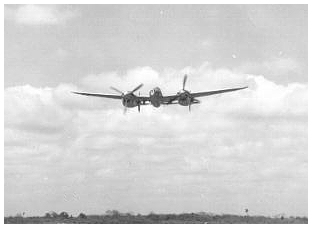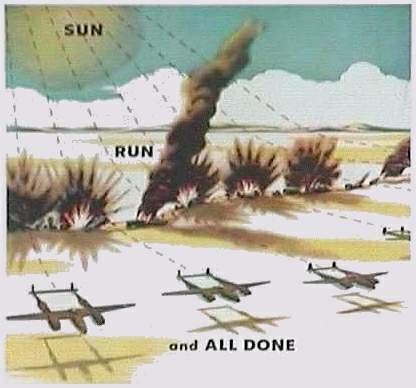|
 THE LOCO-BUSTERS
THE LOCO-BUSTERS
 � � Hitler's war ran on wheels. During the blitzkrieg across Europe, German soldiers always had the reassuring knowledge of thousands of vehicles grinding along in their wake, lugging food, ammunition, fuel, medicine and clothing. And, later, even when they were fighting with their backs to the Fatherland, the men in grey-green could still look over their shoulders and see anti-tank guns, Opel trucks and locomotives pushing forward from the heart of Germany. It was a comforting sight. � � Hitler's war ran on wheels. During the blitzkrieg across Europe, German soldiers always had the reassuring knowledge of thousands of vehicles grinding along in their wake, lugging food, ammunition, fuel, medicine and clothing. And, later, even when they were fighting with their backs to the Fatherland, the men in grey-green could still look over their shoulders and see anti-tank guns, Opel trucks and locomotives pushing forward from the heart of Germany. It was a comforting sight.� � But in the Spring of 1944, the Germans looked up at the sky and, suddenly, comfort gave way to fear. � � When the 20th. Fighter Group, U.S. Army Air Corps, arrived at King's Cliffe, England, in the fall of 1943, the pilots found the English weather as advertised: Cold, grey swirls of fog blanketed the airfield, and when they lifted, the heavens seemed ready to drop tons of water on every square inch of England. "He**!," complained one American pilot "Nobody can fly in this muck!" � � The weather was only one source of frustration to the 20th., an outfit that dated back to 1930, to the day of P-12 biplane fighters. Although the group's squadrons were fully manned with pilots and ground crewmen, there wasn't a single airplane among them. President's Roosevelt's promise of "50,000 planes a year" was still unfulfilled. Thus, even when the skies above King's Cliffe finally cleared, the pilots of the 20th. remained grounded. They morosely watched other fliers trundle Lockheed P-38s off of the hardstands, taxi on to the runways and take off full-throttle, streaking across the Channel to get at the Luftwaffe.
� � That was in August; it wasn't until after Christmas that the 20th. Fighter Group was up to strength in gleaming new P-38 Lightnings and ready to validate it's motto, "Victory By Valor." � � Valor, yes, Victory, no. Recalls one survivor: "The first 90 days of operation saw us pass through our worst crisis. The skill and galantry of our pilots too often went unrewarded. It was a great period of disillusionment and tragedy." � � Over Neumunster, Germany, on January 5, 1944, for example, the green Americans of the 20th. were jumped by a mixed force of Me-109s and FW-190s. When the brief, brutal melee was over, one American, Lt. Bob French, was drifting down toward captivity; a second, Lt. Bennie Carbajal, had vanished, and most of the others were nursing shotup airplanes. To cap the day, Lt. Art Altmann's P-38 was hit by flak at 21,000 feet over the Dutch Coast, and as other members of the Group watched, horrified, the big fighter dropped swiftly earthward to explode in the mud four miles below. � � Even when the 20th. had it's good moments, the pilots were plagued by misfortune. In a dogfight over Frankfurt, two Lightning pilots took on a twin-engined Me-210. The Messerschmitt burst into flames and spun crazily to earth. The shouts of exultation that sounded over the Americans' R/T were cut short when the victorious P-38s collided and plunged downward in a grotesque tangle of metal. MORE TO COME! |
Unless otherwise noted, all content � copyright The Art of Syd Edwards 1998-1999. All rights reserved and reproduction is prohibited.

